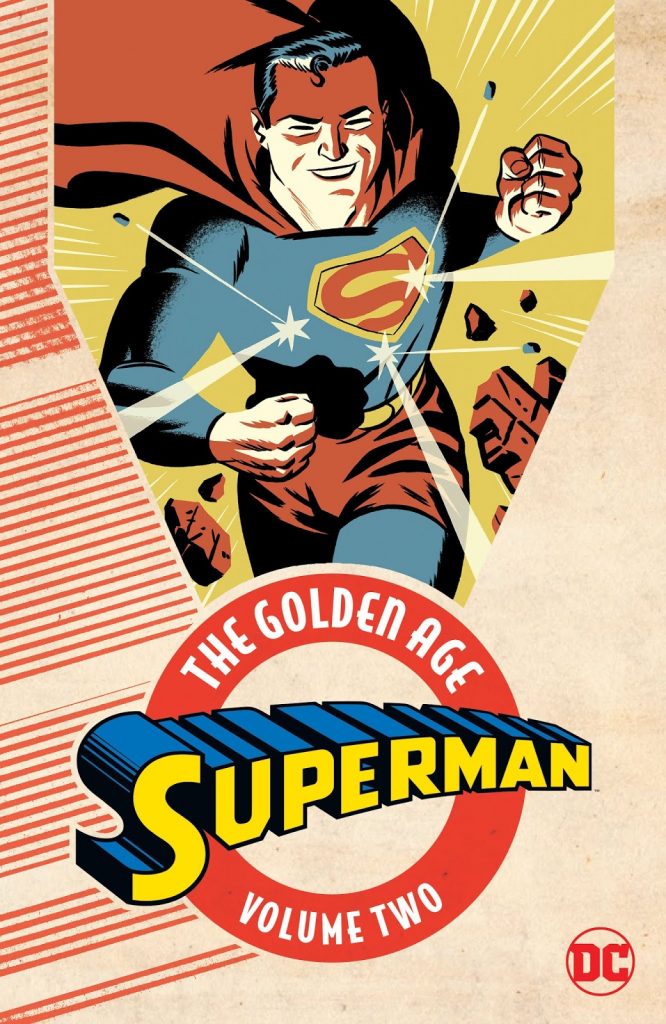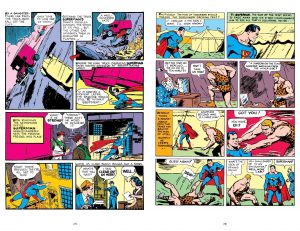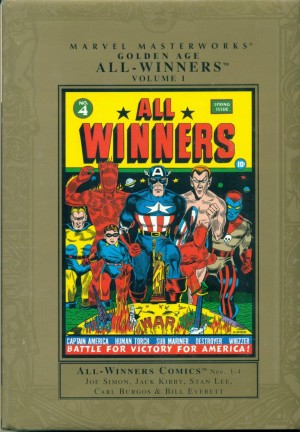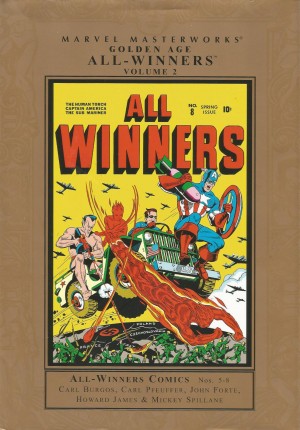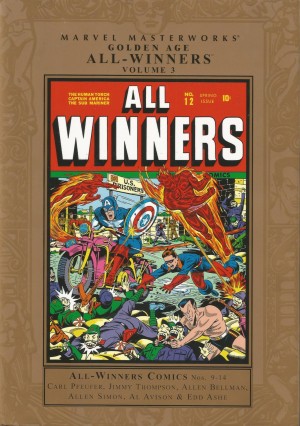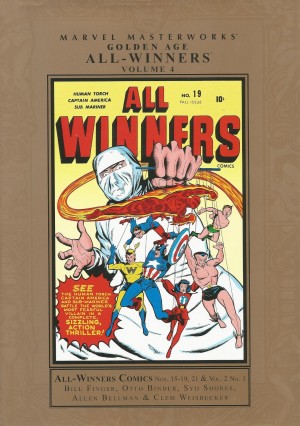Review by Frank Plowright
Under a second beautifully styled retro-cover by Michael Cho, this collection supplies all Superman stories from 1940’s comics, and there’s a distinct improvement over Volume One.
Much of that can be seen just by glancing at the artwork. Interestingly, the credits fly in the face of what most scholars believe to be the case, ignoring Paul Cassidy’s work on pencils and inks (sample art left). Even allowing for improvement with practice, the hand of a different artist is apparent in most strips here credited to Joe Shuster alone when compared with his earlier art. By 1940 the sheer amount of Superman art needed for assorted comics, a newspaper strip and merchandising illustration meant Shuster formed a studio, and it resulted in artistic differences. Cassidy’s pages have a greater realism, and he’s able to express emotion on faces far better than Shuster. Jack Burnley brings superior draftsmanship (sample right), and his Superman moves away from the squat, barrel-chested portrayal into someone taller and more elegant. While Wayne Boring would become the definitive Superman artist of the 1940s, he took Burnley’s design forward. A dead giveaway of the art not being by Shuster is all the other artists can draw a more convincing chest emblem.
A surprise awaits concerning the villain of the first story, best not spoiled here, but inventive and indicating that Jerry Siegel has an offbeat imagination beyond his creation of Superman. He continues to expand Superman’s powers in these stories, introducing the idea of x-ray vision, telescopic vision and super-hearing, while establishing Superman operates in Metropolis. The name of the newspaper employing Clark Kent and Lois Lane is somewhat arbitrarily changed to The Daily Planet in an early story. And also early we have the first appearance of Lex Luthor, but not as we know him, an explanation for which awaits when considering Volume Three. Here he is an evil genius when introduced, referred to as mad in a second story, but with a very prominent shock of red hair. None of his stories rank near the best of this collection, but, hey, it’s Luthor, and a villain aiming to control the world is setting his sights a lot higher than the gangsters Superman commonly deals with in 1940.
By the end of this collection more fantastical stories are on the agenda, replacing those where Superman had the time to sort out problems for ordinary members of the public. However, Superman still isn’t seen as a universal figure, and it’s interesting that police, crooks and the public are unaware of who he is, and that Lois Lane isn’t just an annoying victim to be rescued, but a resourceful, if sometimes acerbic, reporter.
These stories have previously been reprinted in several different formats. In hardback they can be found in the second Action Comics Archives and across the first and second Superman Archives, or in the first bulky hardcover Superman: The Golden Age Omnibus. As paperback collections they were previously available in Superman Chronicles Volumes Two, Three and Four.
